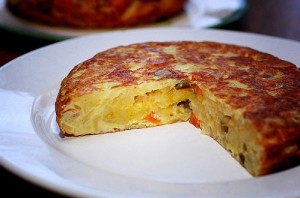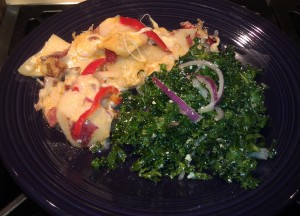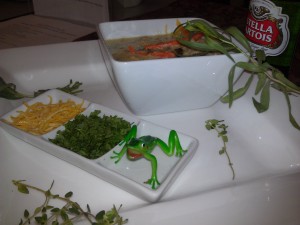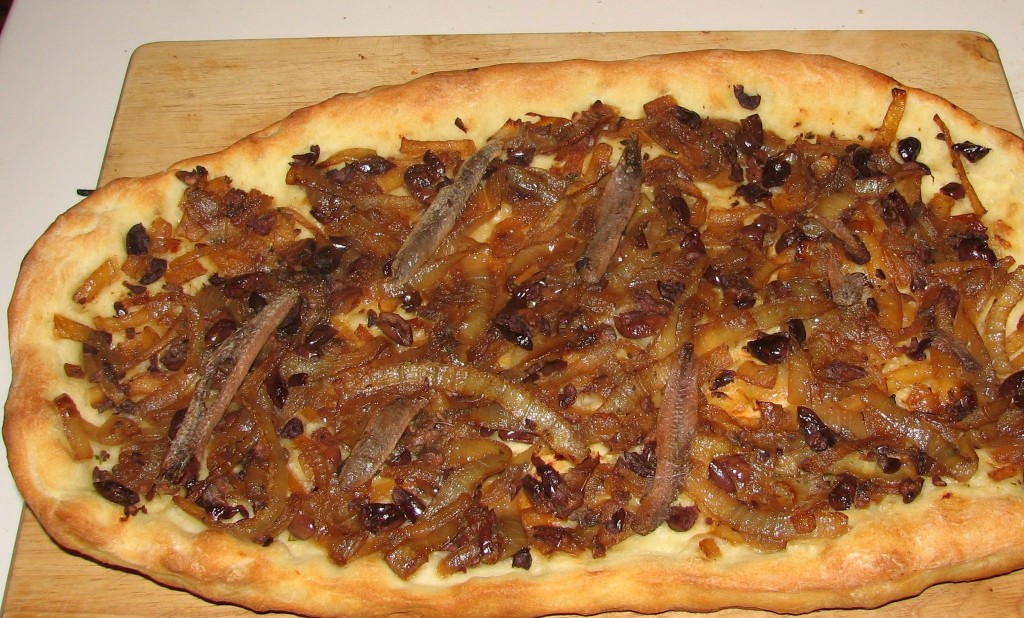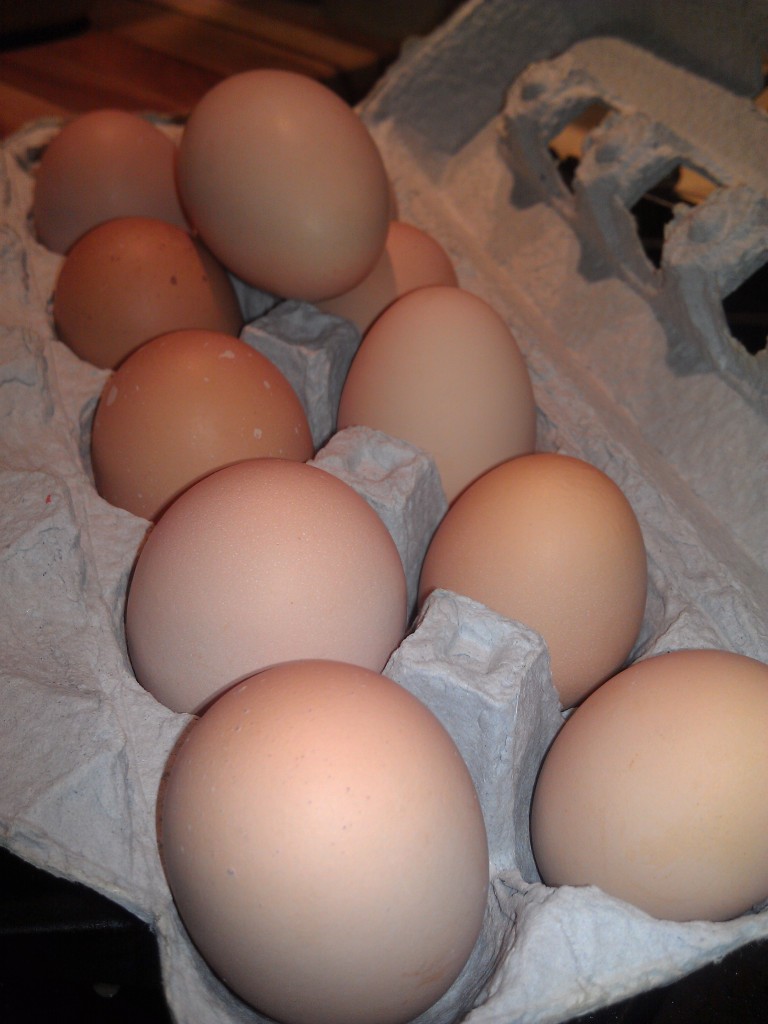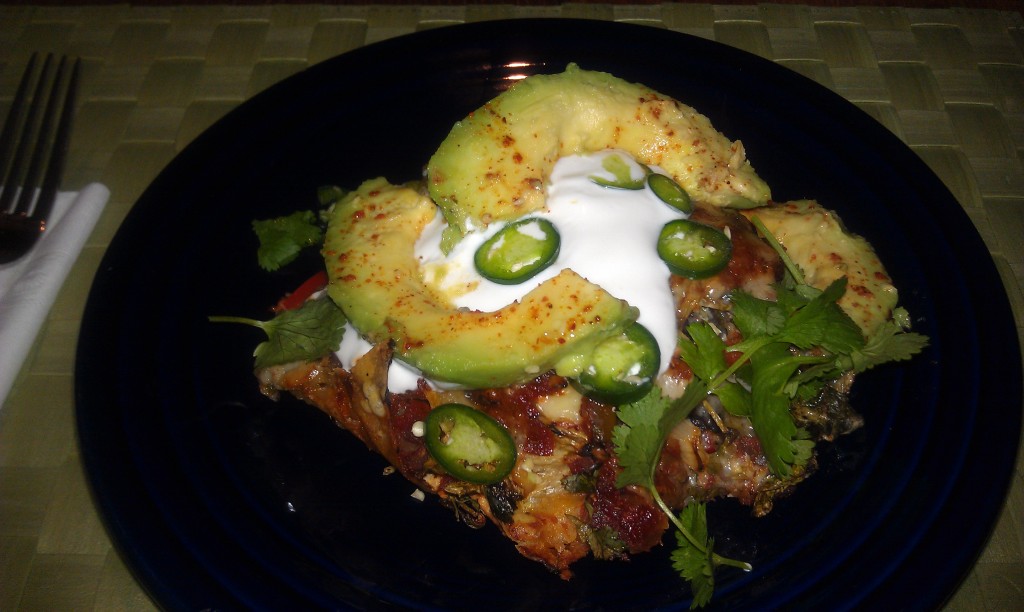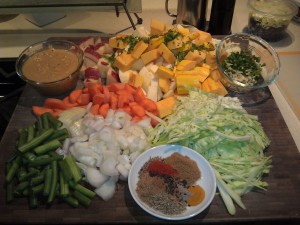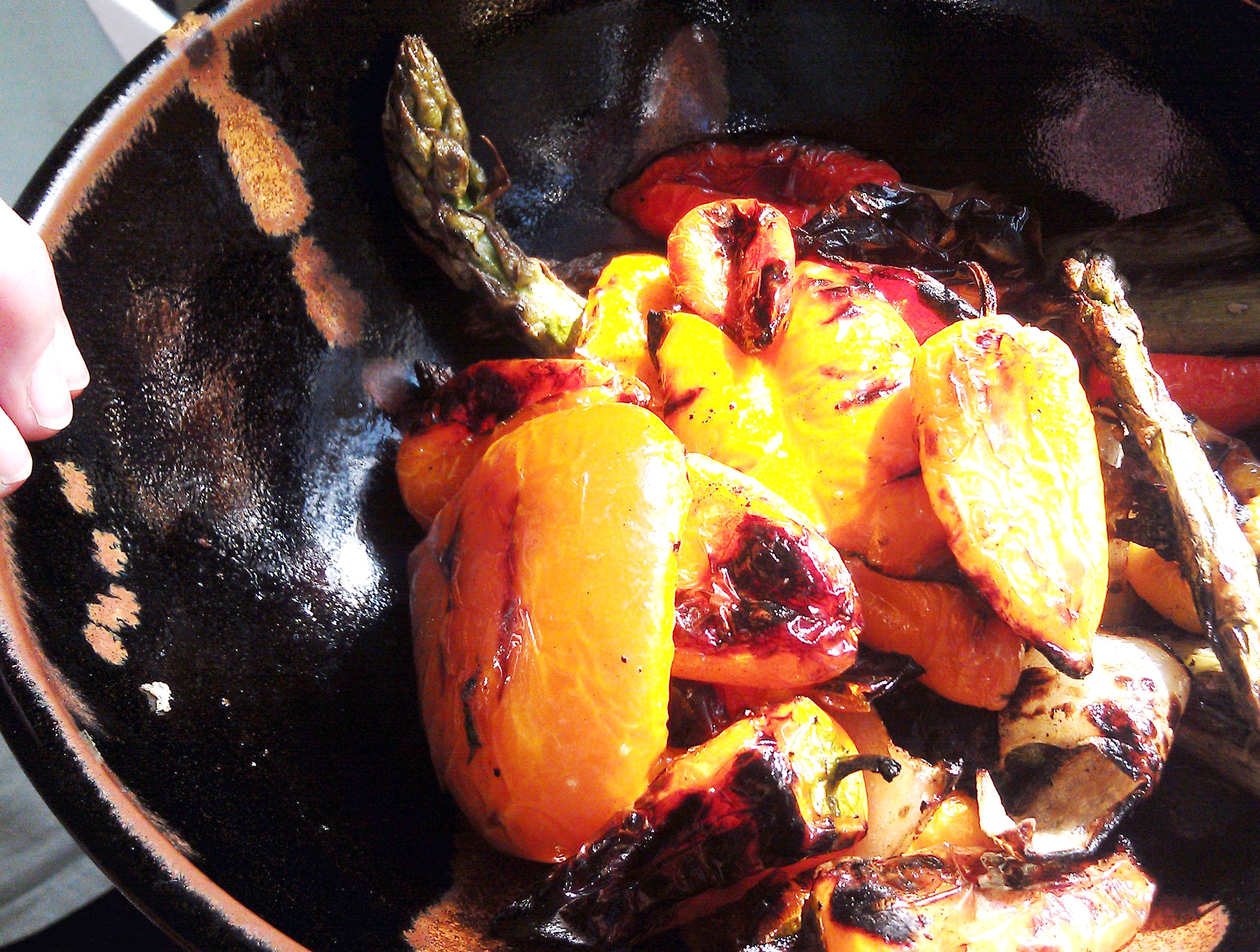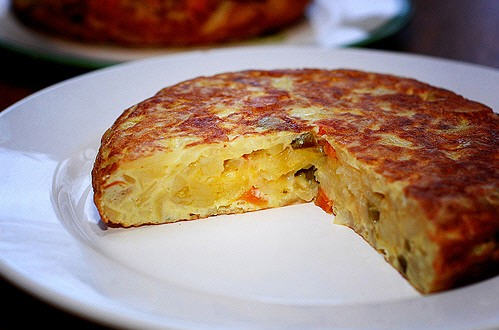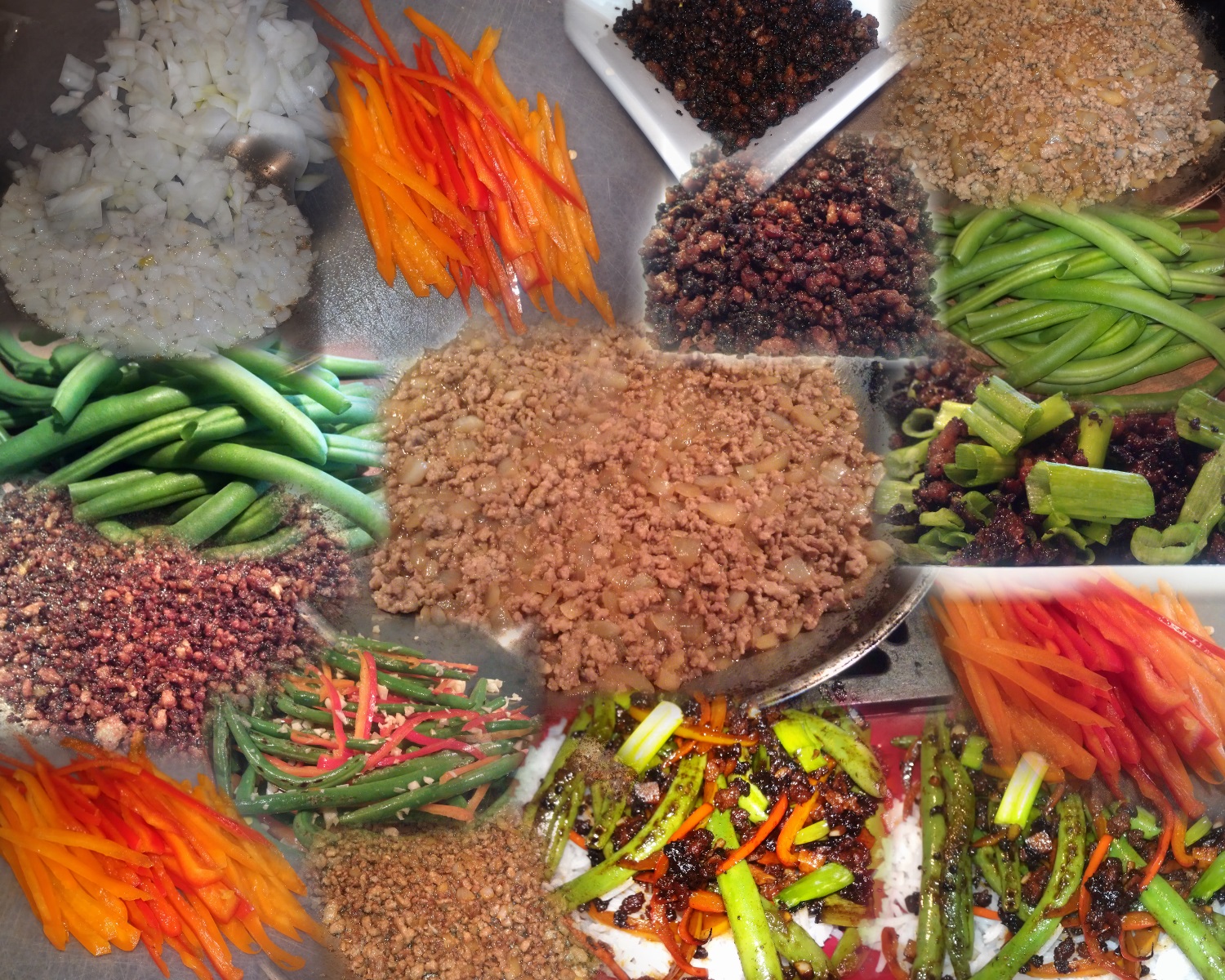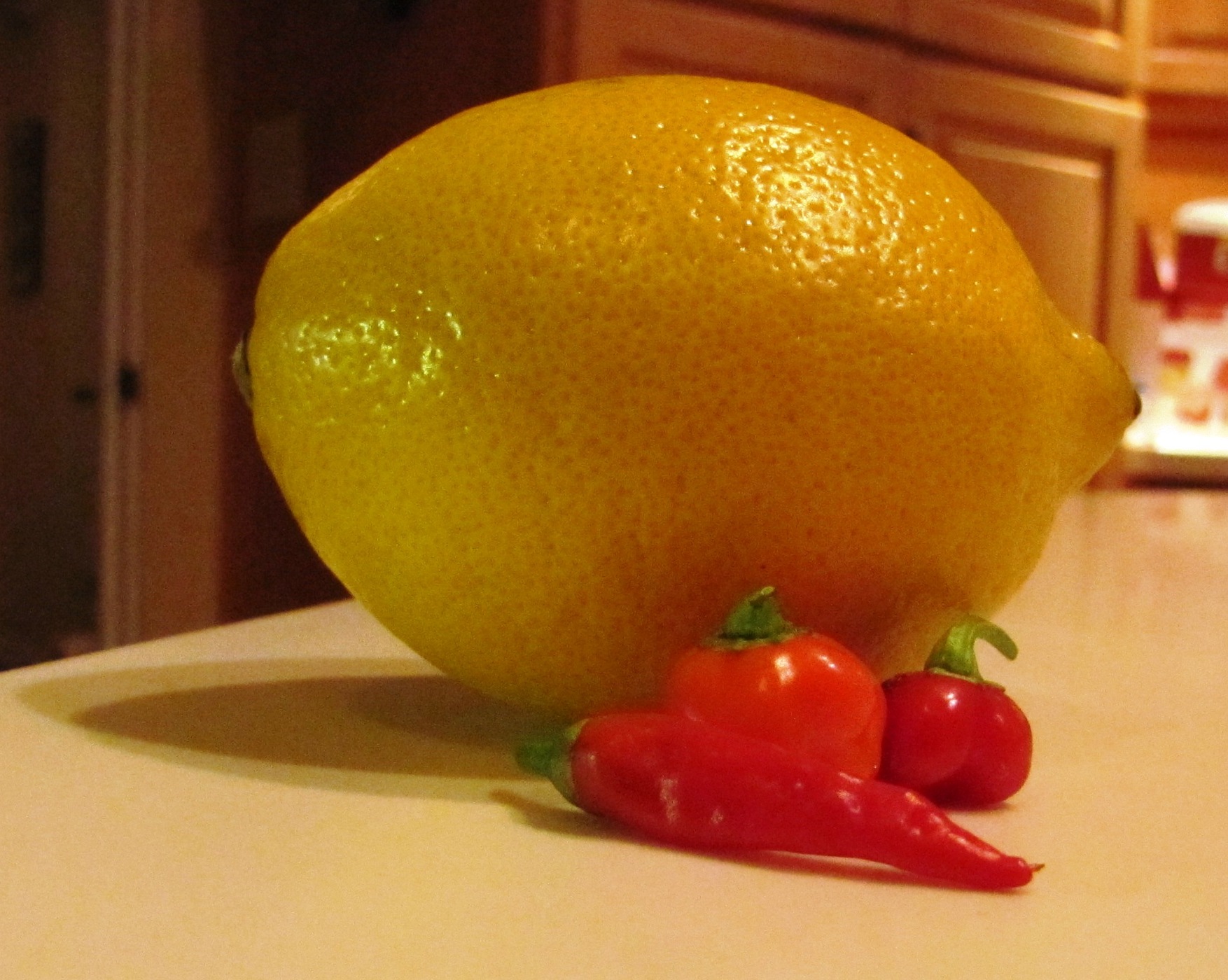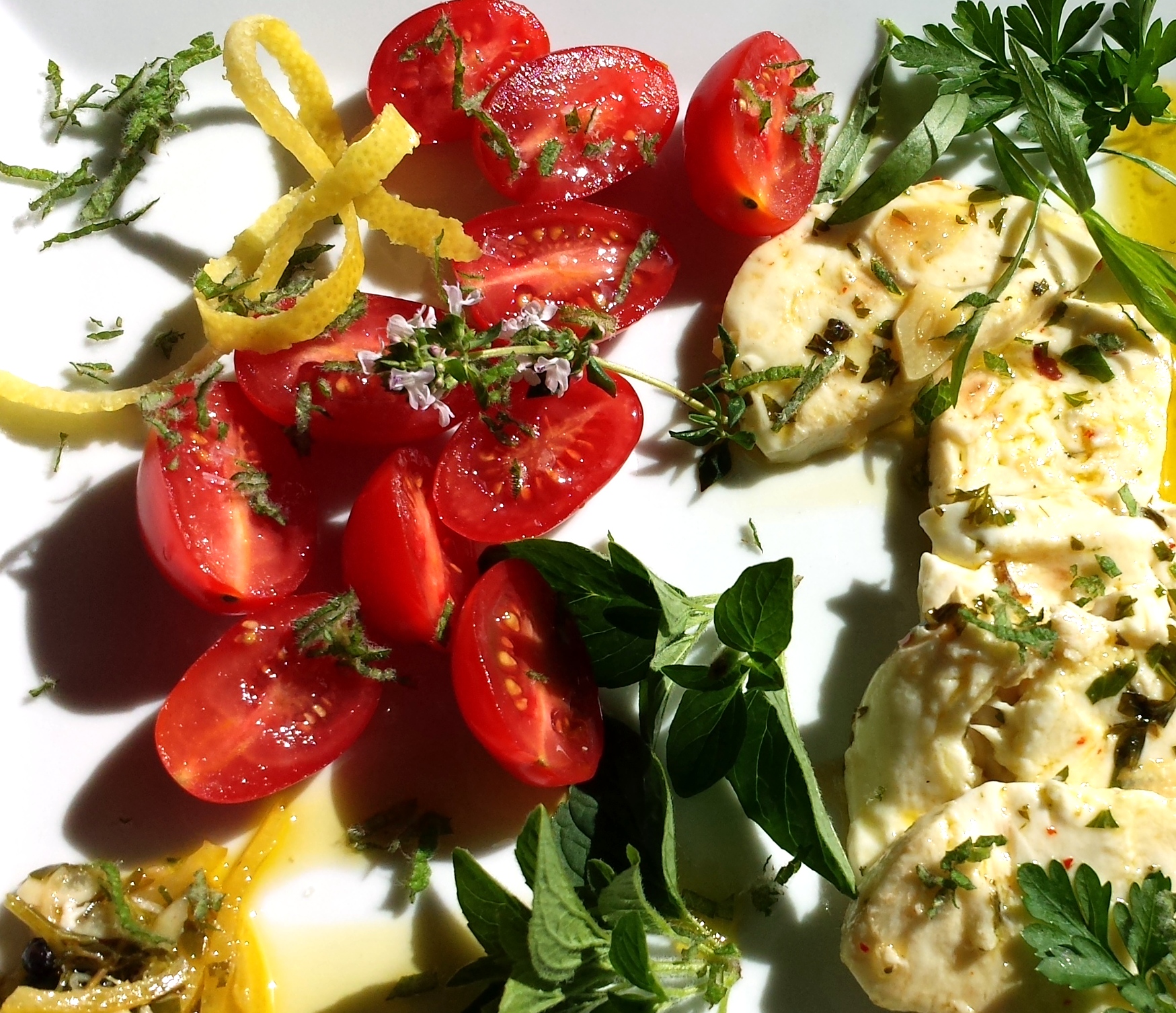I was lucky enough to win the blue ribbon at our local Culinary Art Society monthly dinner gathering with this dish – a rich, elaborate potato frittata that is one of the most popular types of tapas in Spain today. I adapted this recipe from one shared by Bobby Navarro (100eats100days).
I remain convinced that it is not necessary to fry the onions in the large semi-deep-fry amount of oil (see the recipe below) that you’ll later use for your potatoes. Proponents of the “cook the onions in the deep pool of oil” note that this will give the potatoes a better, more onion-y flavor.
I don’t think so, but I was in a hurry, and so – I cooked to the recipe’s indicated technique. Next time I make these, I’m going to try an entirely different technique and will report back to you on how it turns out!
This is the classic Spanish tapas and is something you will see (we did!) at virtually every place in Spain where tapas are sold or given away. I’ve tarted it up a little with some good local chorizo and a little homemade sofrito.
I love how the Spanish have transformed snacking into an art form. In the States, snack food is a mercilessly commercial operation, where we are besieged with engineered snack foods designed to turn us into, well, mindless munchers. In Spain, snacking – tapas – is an art form that celebrates local ingredients, unusual and beautiful preparations and regional culinary heritage.
Makes enough for 2 tortillas, about 50-60 small wedges as tapas. Served with chorizo and homemade sofrito.
Ingredients
- 3 lb. Yukon Gold potatoes (or use any waxy potato), peeled and sliced into approx. 1/8th” slices
- 3 large sweet yellow onions, peeled, halved and sliced into very thin slices
- 14-16 large eggs (depending on the actual size!)
- 1-1/2 T coarse salt (I used Kosher)
- Half a sweet red pepper, chopped
- ½ lb. chorizo (sausage style, not cured)
- 1 Pint homemade sofrito
- Olive oil for frying, so no need to use expensive Extra Virgin, whose flavors will be lost in the fry!
Method
Put potato slices in a large bowl of warm water for about ten minutes or so to remove surface starch. Strictly speaking, this is not required, but it makes for much easier frying and a cleaner tortilla. Treat your potato slices like this and they will not stick to the pan or to other slices!
Remove from water, spin dry, then pat dry with paper towels.
Heat about 1” of oil in a good sized fry pan. Note: You can re-use this oil and not that much of it stays with the tortilla! It should be hot enough that an onion slice sizzles immediately after being dropped in.
Fry sliced onion until it begins to turn a little golden, about 8-10 minutes.
When the onion is almost done, add the red pepper and stir fry for another minute or so until the pepper has softened.
Remove onions with a slotted spoon to a paper towel lined container. Try to shake off as much oil as possible from onions, and then turn them once or twice in the paper to make sure as much oil as possible is removed.
Using the same oil put about half the potatoes into the pan and fry them until they’re puffy and golden, about 10 minutes. Move them about a bit with a heatproof spatula or tongs, so they cook evenly.
Remove potatoes with slotted spoon, again shaking off as much oil as possible, and add to onion mixture. I like to put another paper towel or two on top of the potatoes briefly to remove additional oil, but it’s not required.
Repeat with remaining potatoes. Sprinkle with 1 T of the salt or to taste (mine is for a little bit more salt), turning gently to let salt come in contact with as much of the mixture as possible.
In a large bowl, lightly whisk eggs and mix with the remaining salt. You want to mix them a bit, but not so much that they homogenize entirely and get runny.
Mix the potato onion mixture with the eggs and fold in gently
Heat a medium sized nonstick fry pan and add a little of the olive oil from the potatoes. Add half the egg potato mixture and fry gently over medium heat, stirring a little with a spatula. When the eggs have just begun to set up, turn heat to low and cover the pan. Cook another few minutes until eggs are set, but still a bit loose.
Put a large plate over the pan and invert the pan over the plate, plopping the omelet into the plate. CAREFUL, there’s hot oil here! Slide the omelet back into the pan and cook for another few minutes until both sides have been lightly browned. As Julia Child says “Flipping anything is an act of faith.” Have courage – this will work for you!
Slide tortilla out of the pan onto a cutting board and let cool. Repeat with rest of egg potato mixture. Slice into thin wedges for tapas.
If desired, top each wedge with a little fried chorizo, add a small thin piece of manchego cheese atop each wedge, and serve on top of slices of baguette, cut on the bias and lightly toasted or grilled. Spread a bit of your homemade sofrito on each baguette slice before arranging the tortilla wedge – you’ll be glad you did!
